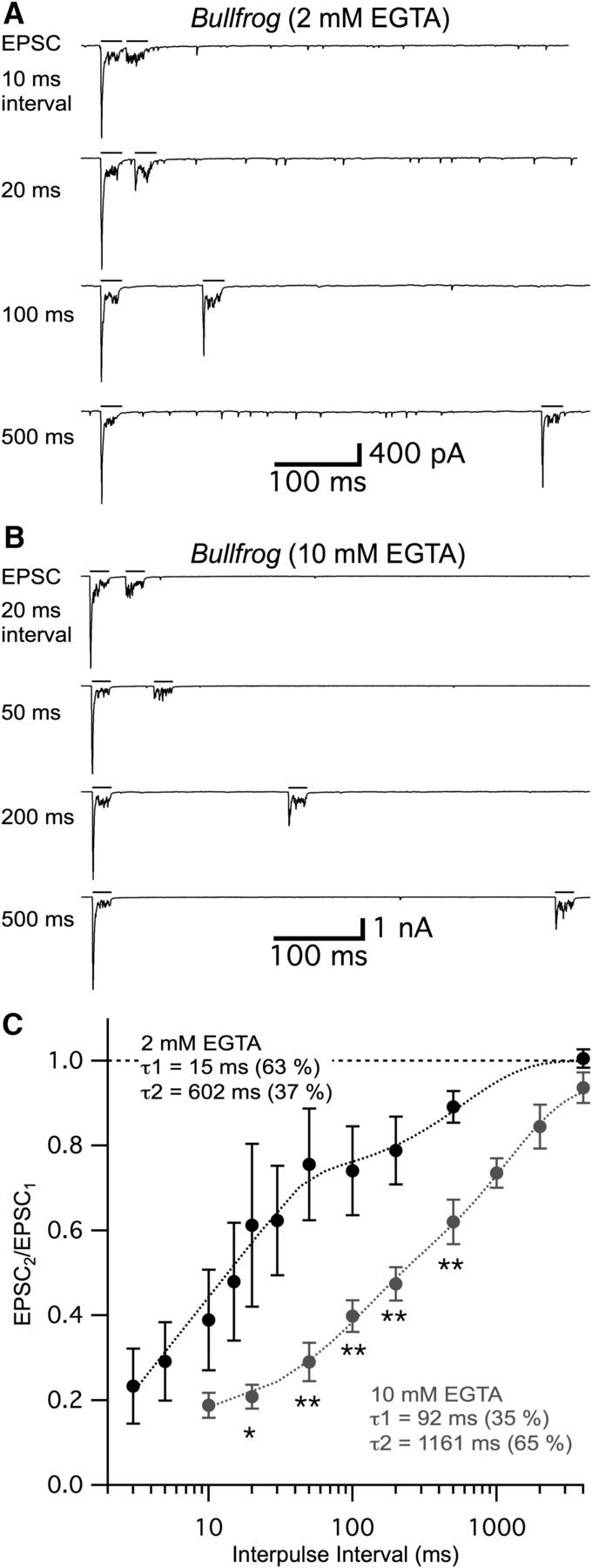Figure 7.

Recovery from paired-pulse depression at bullfrog hair cell synapses is significantly slower with 10 mM EGTA. A, B, EPSCs evoked by two depolarizing pulses were obtained by paired recordings from an afferent fiber and an amphibian papilla bullfrog hair cell. The hair cell was depolarized from −60 mV to −30 mV for 20 ms (black bars) with various IPIs (interpulse intervals). The intracellular Ca2+ buffer of the hair cells was 2 mM EGTA (A) or 10 mM EGTA (B). The first depolarizing pulse still evokes a large phasic EPSC (EPSC1) when 10 mM EGTA is present in the hair cell. However, the recovery of the phasic component of the second EPSC (EPSC2) was significantly slower with 10 mM EGTA. C, Summary of the PPR (EPSC2/EPSC1) recovery time course. Two EPSCs were evoked by depolarizing hair cells using a pair of 20 ms pulse with various IPIs. The 2 mM (black, n = 4–9 pairs) and 10 mM EGTA (gray, n = 5–8) were used as intracellular calcium buffers within hair cells. All the EPSCs were measured after 4 min from the whole-cell break-in to allow for full dialysis with EGTA. Data with 2 mM EGTA were modified from Cho et al. (2011). PPRs with 20, 50, 100, 200, and 500 ms IPIs were significantly different between 2 mM EGTA and 10 mM EGTA. *p < 0.05 (unpaired t test). **p < 0.01 (unpaired t test).
